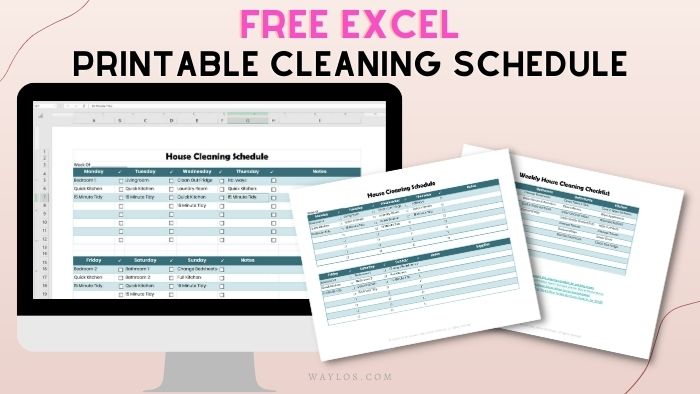How To Use A Brain Dump To Totally Organize Your Mind

Have you ever suddenly remembered some random thing you’ve been meaning to do, in the middle of doing something else?
The thought comes in like a DING! and you say to yourself, “I should do that later.” And once you go back to focusing on the thing you were originally doing, that new thought fades away….Until it’s replaced with another random DING! thought about something else you’ve been putting off, or are a little worried about having to do….
How can we stop that constant churning of our brains, and worry that we’ll forget something important? With a Brain Dump.
[/et_pb_text][/et_pb_column][/et_pb_row][et_pb_row _builder_version=”4.4.0″][et_pb_column type=”4_4″ _builder_version=”4.4.0″][et_pb_text _builder_version=”4.4.2″ text_font=”Georgia||||||||” text_text_color=”#000000″ text_font_size=”19px” text_line_height=”1.6em” ul_font_size=”19px” ul_line_height=”1.7em” ol_font_size=”19px” ol_line_height=”1.7em” header_font=”Georgia||||||||” header_2_font=”Georgia||||||||” header_2_text_color=”#cc1c9a” header_2_font_size=”30px” header_2_line_height=”1.7em” header_3_font=”Georgia||||||||”]What Is a Brain Dump?
A brain dump is exactly what it sounds like: Dumping onto a piece of paper all the thoughts and ideas swirling around in your brain.
Your brain is constantly sounding off alarms at inopportune times, because it has no way of organizing the thoughts in your head by itself. By doing a brain dump, you are taking those thoughts and ideas, and giving them a place to live outside your head, so your brain doesn’t struggle with trying to hold on to them, or trying to figure out when to DING you about them.
You are transferring the information from your mind onto paper, a place where it is safe and can be used later, like a snapshot.
[/et_pb_text][/et_pb_column][/et_pb_row][et_pb_row column_structure=”1_4,1_2,1_4″ _builder_version=”4.4.0″][et_pb_column type=”1_4″ _builder_version=”4.4.0″][/et_pb_column][et_pb_column type=”1_2″ _builder_version=”4.4.0″][et_pb_image src=”https://livinglifeasmoms.com/wp-content/uploads/2020/04/How-to-declutter-your-mind-with-a-Brain-Dump.jpg” _builder_version=”4.4.2″][/et_pb_image][/et_pb_column][et_pb_column type=”1_4″ _builder_version=”4.4.0″][/et_pb_column][/et_pb_row][et_pb_row _builder_version=”4.4.0″][et_pb_column type=”4_4″ _builder_version=”4.4.0″][et_pb_text _builder_version=”4.4.2″ text_font=”Georgia||||||||” text_text_color=”#000000″ text_font_size=”19px” text_line_height=”1.6em” ul_text_align=”left” ul_font_size=”19px” ul_line_height=”1.6em” ol_font_size=”20px” ol_line_height=”1.7em” header_font=”Georgia||||||||” header_2_font=”Georgia||||||||” header_2_text_color=”#cc1c9a” header_2_font_size=”30px” header_2_line_height=”1.7em” header_3_font=”Georgia||||||||” header_3_line_height=”1.4em” hover_enabled=”0″]The Serious Benefits of Brain Dumping
Why should you brain dump?
David Allen, the author of Getting Things Done, regularly talks about the fact that our brains are NOT a hard drive.
He says,
“Your head’s a crappy office. It’s for having ideas, not for holding them. As a matter of fact, research has shown that if you keep more than four things just in your head, you’ll lose track of them, you will not have the appropriate relationship with them, with each other…..basically, you’ll be driven by latest and loudest.”¹
That last part is so meaningful. Without having a way of organizing your thoughts outside of your head, like a brain dump, we end up spending our time on the latest and loudest thoughts that are in our heads, instead of the most important things.
It’s like when someone is nagging and begging you to do something, and you finally give up and do it, just to shut them up. Not a healthy relationship to have with your tasks, or with yourself.
Why do brain dumps work? When we have a place outside our heads to hold our ideas, we are more likely to:
- decide once and for all whether to pursue them or let them go, and
- come up with a plan to actually go through with them.
Your brain no longer needs to nag you, or worry about every single thing you think up. It helps loosen stress, it’s calming, it’s motivating, and it’s easier on your heart health.
Maybe you’re feeling super overwhelmed, or super creative, and the thoughts are just consuming you. With a brain dumping exercise, they won’t have to anymore.
[/et_pb_text][/et_pb_column][/et_pb_row][et_pb_row _builder_version=”4.4.0″][et_pb_column type=”4_4″ _builder_version=”4.4.0″][et_pb_text _builder_version=”4.4.2″ text_font=”Georgia||||||||” text_text_color=”#000000″ text_font_size=”19px” text_line_height=”1.6em” ul_text_align=”left” ul_font_size=”19px” ul_line_height=”1.6em” ol_font_size=”19px” ol_line_height=”1.7em” header_font=”Georgia||||||||” header_2_font=”Georgia|700|||||||” header_2_text_color=”#cc1c9a” header_2_font_size=”30px” header_2_line_height=”1.7em” header_3_font=”Georgia||||||||” header_3_text_color=”#cc1c9a” header_3_line_height=”1.4em”]Materials Needed
1. A notebook, like the:
- Moleskine notebooks (top fave),
- Lemome Dotted Notebook (eco-friendly!) or
- Erin Condren softbound notebooks
(I’m left-handed and the spines lay flat on these notebooks, so I can easily write in them)
Really any piece of paper will do!
2. Your favorite pen or marker, like the Frixion Erasable Pens, or Paper Mate InkJoy Gel Pens
3. Later on, you’ll also need your planner, calendar, notepad or bullet journal – wherever you keep your to-do’s or tasks.
TIP: I highly recommend a separate notebook just for brain dumping, because it can get long and messy, it won’t be nice to have to keep looking at it in your bullet journal or planner.
[/et_pb_text][/et_pb_column][/et_pb_row][et_pb_row _builder_version=”4.4.0″][et_pb_column type=”4_4″ _builder_version=”4.4.0″][et_pb_text _builder_version=”4.4.2″ text_font=”Georgia||||||||” text_text_color=”#000000″ text_font_size=”19px” text_line_height=”1.6em” ul_text_align=”left” ul_font_size=”19px” ul_line_height=”1.6em” ol_font_size=”20px” ol_line_height=”1.7em” header_font=”Georgia||||||||” header_2_font=”Georgia||||||||” header_2_text_color=”#cc1c9a” header_2_font_size=”30px” header_2_line_height=”1.7em” header_3_font=”Georgia||||||||” header_3_text_color=”#cc1c9a” header_3_line_height=”1.4em”]How To Do a Brain Dump Effectively:
Let’s get your materials together and start writing!
How to Write Your Thoughts
A brain dump works best when there aren’t any “rules” about what, where, when or how to write. You will get the most benefit and gain the most traction by letting the pen flow freely.
With that said, some people just work better when things are a little more organized. Maybe you don’t want to have to go through the list or re-write it by category later on, that’s totally fine!
When I started out, my brain dump was categorized by:
- Home
- Work
- Blog
Here’s a picture of my earlier ones to show you what I mean:
[/et_pb_text][et_pb_image src=”https://livinglifeasmoms.com/wp-content/uploads/2020/04/Brain-Dump-Example.jpg” _builder_version=”4.4.2″][/et_pb_image][et_pb_text _builder_version=”4.4.2″ text_font=”Georgia||||||||” text_text_color=”#000000″ text_font_size=”19px” text_line_height=”1.6em” ul_text_align=”left” ul_font_size=”19px” ul_line_height=”1.6em” ol_font_size=”20px” ol_line_height=”1.7em” header_font=”Georgia||||||||” header_2_font=”Georgia||||||||” header_2_text_color=”#cc1c9a” header_2_font_size=”30px” header_2_line_height=”1.7em” header_3_font=”Georgia||||||||” header_3_text_color=”#cc1c9a” header_3_line_height=”1.4em”]
Another easy way to categorize your brain dump worksheet is by “Needs” and “Wants,” or “To Do’s” and “How I’m Feeling.” I bet when you have your first brain dump under your belt, the categories that fit you best will jump out.
Now, I rely a lot on my planner and daily to-do lists, so I like to just pour everything out in one long list. I can then:
- cross off the not important things (or things I decide not to worry about anymore)
- Star the things I want to save for later, and
- Check off the things I transfer into my planner to actually get done, and out of my hair! I especially like giving tasks to someone else to do.
What to Write in Your Brain Dump: Examples
What do you write in a brain dump? There are a few brain dump examples to choose from, so pick any (or all) of them that are comfortable for you:
- Work stuff
- School stuff
- Home stuff
- Feelings & emotions
- Worries
- Nagging tasks
- Goals you’ve been thinking of taking on, etc.
Really the point of this is to let the thoughts flow, whatever they may be. Just write whatever comes to mind!
[/et_pb_text][/et_pb_column][/et_pb_row][et_pb_row _builder_version=”4.4.0″][et_pb_column type=”4_4″ _builder_version=”4.4.0″][et_pb_text _builder_version=”4.4.2″ text_font=”Georgia||||||||” text_text_color=”#000000″ text_font_size=”19px” text_line_height=”1.6em” ul_text_align=”left” ul_font_size=”19px” ul_line_height=”1.6em” ol_font_size=”19px” ol_line_height=”1.7em” header_font=”Georgia||||||||” header_2_font=”Georgia||||||||” header_2_text_color=”#cc1c9a” header_2_font_size=”30px” header_2_line_height=”1.7em” header_3_font=”Georgia||||||||” header_3_text_color=”#cc1c9a” header_3_line_height=”1.4em”]For How Long Should I Be Writing?
Ideally, you should write for as long as it feels natural to do so. You can start at a time you know you won’t be interrupted, to give yourself as much time as possible to get your thoughts and feelings out.
But, we all have things to do. If you are strapped for time, set a timer for ten minutes. If after the timer goes off, you are still super motivated, keep writing!
[/et_pb_text][/et_pb_column][/et_pb_row][et_pb_row _builder_version=”4.4.0″][et_pb_column type=”4_4″ _builder_version=”4.4.0″][et_pb_text _builder_version=”4.4.2″ text_font=”Georgia||||||||” text_text_color=”#000000″ text_font_size=”19px” text_line_height=”1.6em” ul_text_align=”left” ul_font_size=”19px” ul_line_height=”1.6em” ol_font_size=”19px” ol_line_height=”1.7em” header_font=”Georgia||||||||” header_2_font=”Georgia||||||||” header_2_text_color=”#cc1c9a” header_2_font_size=”30px” header_2_line_height=”1.7em” header_3_font=”Georgia||||||||” header_3_text_color=”#cc1c9a” header_3_line_height=”1.4em”]The Next Steps
You have two options here: to step away from the list and review it later with a fresh mind, or start using it right away.
Sometimes, putting your brain dump worksheet away for now and reading through it later, will help take the emotion out of sorting through the items, which is your next step!
Whatever you decide, once you are ready to review your brain dump list, you can follow these steps to turn those swirling thoughts into items that are RESOLVED and no longer need to nag the crap out of you:
1. Declutter Your Notes.
Here’s where you pare down your notes. Compare the items on your list and cross of the least important item out of the whole thing. Decide right now that it is NOT worth your time or energy, and let it go.
Repeat this process and be RUTHLESS about it! Life is short and holding on to thoughts or things to do that are just not important is going to free up your time to do the things you LOVE.
2. Use the Eisenhower Method to Categorize the Tasks.
I touched on this method in my “How to Plan Your Work Week” post.
Here’s a snippet from that post:
Basically, all of your tasks, work and life, can be sorted into one of 4 boxes:
Urgent & Important – Has to get done and only you can do it. A client or project deadline, for example.
Urgent but Not Important – Delegate the things that have to be done, just not specifically by you. Yes, your 7-year-old can take out the garbage and fold their own clothes.
Important but Not Urgent – Scheduling your yearly physical, long-term family or life goals without a specific deadline.
Less Important & Not Urgent – Scouring your inbox for coupons. No more! Get it off your to do list, out of your planner and out of your life forever.
If you are more of a visual learner, here’s a more in-depth article with a video!
3. Review Any Feelings or Emotions that Came Through on the Paper.
Consider what steps you can take to either turn them around (if they are negative), or keep them going (if they are positive). Add those steps to your brain dump sheet, in a different color if possible. Maybe things like:
- Scheduling a monthly call with a relative you feel bad about not calling,
- Downloading some podcasts about positivity and self-love,
- Getting a few Audiobooks or Kindle books about the subject that is weighing on you,
- Making an appointment with a mental health professional, etc.
Put these items into your “important” categories, they should absolutely go into your planner so you can work on them.
4. Transfer Your Top Brain Dump Items to Your Planner
Whatever you wrote into “Urgent & Important” (Box #1) and “Important But Not Urgent” (Box #2) are going into your planner. They ARE important to you, and we are going to give them some love and respect today.
If you need help breaking down big tasks or items into your planner, check out these posts:
5. Keep Your Brain Dump Sheet in a Place You Will Remember.
Review it in a few weeks or a month to see if the things you were worried about are even relevant anymore. You may be able to “declutter” even more items!
[/et_pb_text][/et_pb_column][/et_pb_row][et_pb_row _builder_version=”4.4.0″][et_pb_column type=”4_4″ _builder_version=”4.4.0″][et_pb_text _builder_version=”4.4.2″ text_font=”Georgia||||||||” text_text_color=”#000000″ text_font_size=”19px” text_line_height=”1.6em” ul_text_align=”left” ul_font_size=”19px” ul_line_height=”1.6em” ol_font_size=”19px” ol_line_height=”1.7em” header_font=”Georgia||||||||” header_2_font=”Georgia||||||||” header_2_text_color=”#cc1c9a” header_2_font_size=”30px” header_2_line_height=”1.7em” header_3_font=”Georgia||||||||” header_3_text_color=”#cc1c9a” header_3_line_height=”1.4em”]How Often Should You Brain Dump?
Brain dumps can be a once-in-a-while thing, or they can be a regularly scheduled, and very helpful, part of your weekly or monthly task management.
I suggest you try it out once using my method, and if you are clearly checking things off your list like a boss, and feel much mentally lighter and less anxious about all the things, then definitely use it once or twice a month going forward.
Some people also like to do it at the end of their work week, to:
- keep track of what they did NOT get done, and
- record any relevant news or creative ideas while it’s still fresh
If you’re a working mom like me, this could be really beneficial.
I personally was brain-dumping every morning for a few months, but I found that I was repeating a lot of things each day. It was giving me a little anxiety about “still” not finishing this or that task.
So, now I do my brain dump about once every week to two weeks. It’s a lot more helpful for me to see what is weighing on my mind and prioritize it, or logically decide to let it go completely, without any guilt.
But, feel free to keep it casual after this time, and pull out your pen & paper when the mood strikes.
[/et_pb_text][/et_pb_column][/et_pb_row][et_pb_row _builder_version=”4.4.0″][et_pb_column type=”4_4″ _builder_version=”4.4.0″][et_pb_text _builder_version=”4.4.2″ text_font=”Georgia||||||||” text_text_color=”#000000″ text_font_size=”19px” text_line_height=”1.6em” ul_text_align=”left” ul_font_size=”19px” ul_line_height=”1.6em” ol_font_size=”20px” ol_line_height=”1.7em” header_font=”Georgia||||||||” header_2_font=”Georgia||||||||” header_2_text_color=”#cc1c9a” header_2_font_size=”30px” header_2_line_height=”1.7em” header_3_font=”Georgia||||||||” header_3_text_color=”#cc1c9a” header_3_line_height=”1.4em”]Final Thoughts
Holding on to random stuff clutters your brain. No matter how you choose to organize what’s in your head, the most important thing to do is to give all those wonderful thoughts and ideas a place to be worked on and resolved.
Did you learn anything new about yourself with this brain dump exercise? How many things did you get off your mind? Let me know in the comments!
XO,
-Mina
[/et_pb_text][et_pb_text module_id=”footnote-quote” _builder_version=”4.4.2″ text_font=”Georgia||||||||” text_text_color=”#000000″ text_font_size=”19px” text_line_height=”1.6em” ul_font_size=”20px” ul_line_height=”1.7em” ol_font_size=”20px” ol_line_height=”1.7em” header_font=”Georgia||||||||” header_2_font=”Georgia|700|||||||” header_2_text_color=”#cc1c9a” header_2_font_size=”30px” header_2_line_height=”1.7em” header_3_font=”Georgia||||||||”]
¹Quote from this interview with David Allen for Blinkist Magazine.
[/et_pb_text][/et_pb_column][/et_pb_row][et_pb_row _builder_version=”4.4.2″][et_pb_column type=”4_4″ _builder_version=”4.4.2″][/et_pb_column][/et_pb_row][/et_pb_section]


